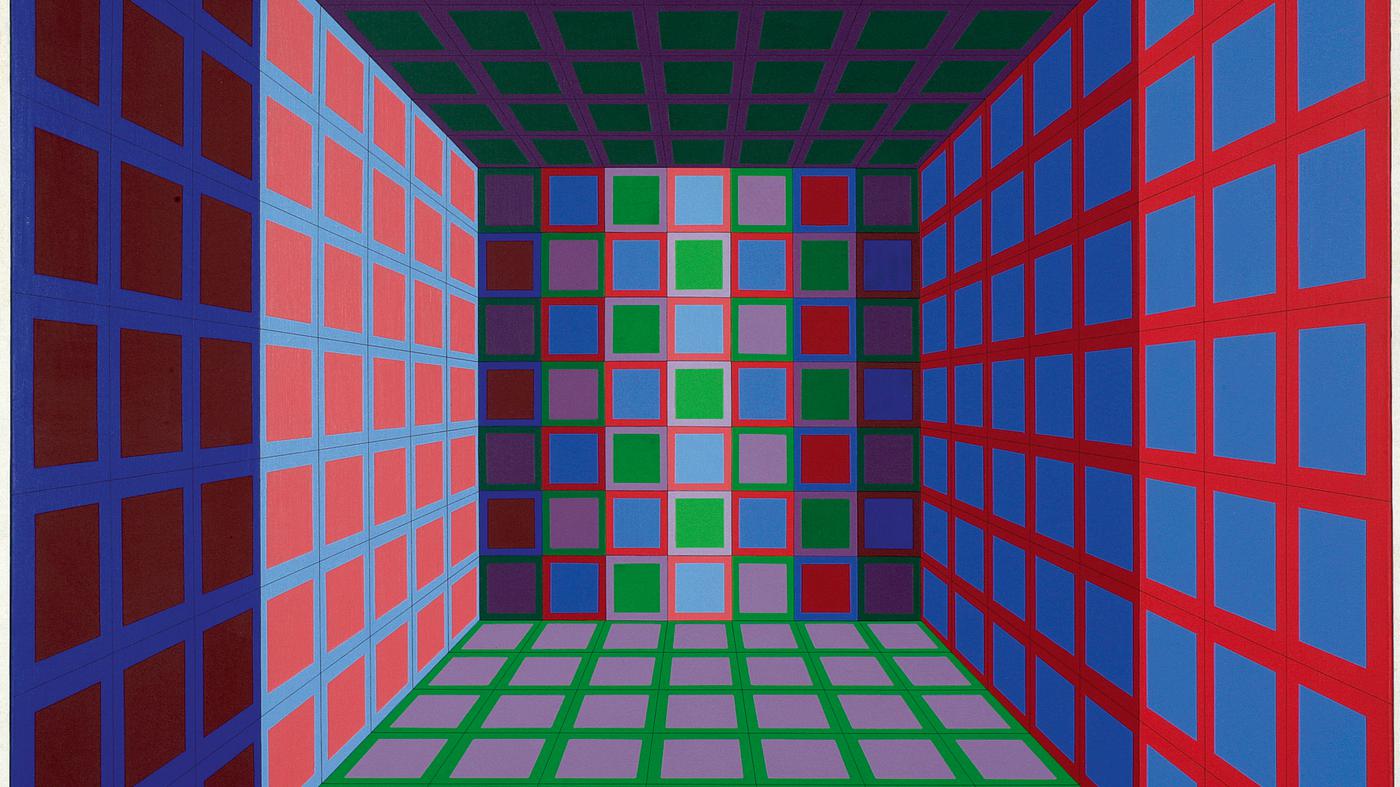An edgy misunderstanding. It was always said that the Ritter Chocolate Factory only collected square art. That sounds a bit monotonous – and doesn’t correspond to the facts. The cubic Ritter Museum has been located at the company headquarters in Waldenbuch, Swabia, since 2005. Part of the collection, which includes over a thousand works, is housed here and what the square can do has been visible for almost two decades.
Marli Hoppe-Ritter temporarily gave another part of her acquisitions to Berlin. So you don’t have to travel to get an impression of the diversity of the isosceles rectangle. A visit to the Berlin representative office of the Ketterer auction house is sufficient. However, the pictures are not for sale: “Square, practical, art” is intended to give an insight into private collecting. And the first prominently hung example is circular.
Shapes collide
“Diagonal Passage” (1947) by Leon Polk Smith is a constructive painting. It plays with color and geometry, both overlapping in the motif. A square emerges as the central element: actually there are several of them, the shape repeats itself, getting smaller and smaller, alternating in black and white. Smith, who died in Manhattan in 1996, represented hard-edge painting. Gentle transitions like in impressionism were alien to him; in his pictures the abstract objects collide with each other. This ultimately makes his squares visually more dominant than the circular shape of the canvas.
However, it represents everything that the trained lawyer Marli Hoppe-Ritter is about. Her sympathies for the square clearly stem from her family history. As early as 1932, grandmother Clara Ritter came up with the idea of giving her company’s chocolate a special shape. This became the trademark of the company as well as the later art collection, whose works come from Josef Albers, Victor Vasarely, Theo van Doesburg and Vera Molnar.
The show exposes viewing habits
The artist, a pioneer of computer art, uses a particularly clever approach in her picture “9 ronds, 3 couleurs” from 1966: her square is made up of nine pastel-colored circles, which can also be read as nine independent motifs. Then they remain circles.
The exhibition impressively tells of our viewing habits. In the circle of squares everything is interpreted into squares. When Willi Baumeister created an “Abstraction on Light Gray” in a small format in 1927, the first thing that stands out is the squares. Esther Stocker has created a photographic series in which a body becomes the image carrier for various geometric figures – but you immediately look for rectangles.
Even with Camille Graeser, in whose painting “Caput mortuum – green 1:7” from the 1970s the falling square only takes up a minimal amount of space, the eye focuses directly there. As if I had a bet with the collector that I would really find all the evidence of her passion in the constructive-concrete, cubo-futuristic or even kinetic works.
Marli Hoppe-Ritter once said that the square is a “motif with unexpected potential”. Anyone who has passed the 50 works at Ketterer’s, most of them museums, will understand how true the statement proves to be, and not just when it comes to types of chocolate.
